Search results for: 'Silver roman'
-
 Celtic coin - Iceni tribe
Celtic coin - Iceni tribeEast Anglia mint, reported to have been found in Stonea Grange, Cambridgeshire.
Price: on request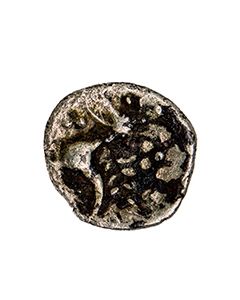 Perfectly preserved Celtic coin - Iceni tribe
Perfectly preserved Celtic coin - Iceni tribeEast Anglia mint, reported to have been found in Stonea Grange, Cambridgeshire.
Price: on request Celtic coin - Iceni tribe
Celtic coin - Iceni tribeEast Anglia mint, reported to have been found in Stonea Grange, Cambridgeshire.
Price: on request Celtic coin - Iceni tribe
Celtic coin - Iceni tribeEast Anglia mint, reported to have been found in Stonea Grange, Cambridgeshire.
Price: on request Base plate of a Roman mirror
Base plate of a Roman mirrorPerfectly preserved bronze plate of a Roman mirror. A handle and reflective metal coating were once part of the object. Typical for upper class Roman households during Imperial times.
€295 Celtic coin - Iceni tribe
Celtic coin - Iceni tribeEast Anglia mint, reported to have been found in Stonea Grange, Cambridgeshire.
Price: on request Augustus denarius from Wishanger hoard
Augustus denarius from Wishanger hoardFound 2021 in East Hampshire, UK. Revers showing Gaius and Lucius, the sons of M. Agrippa. The hoard is a very impressive proof of the fact that coins were in circulation for up to several centuries in the Roman era.
Price: on request Julius Caesar Denarius from Wishanger hoard
Julius Caesar Denarius from Wishanger hoardFound 2021 in East Hampshire, UK. The hoard is a very impressive proof of the fact that coins were in circulation for up to several centuries in the Roman era.
Price: on request Vespasian denarius from Wishanger hoard
Vespasian denarius from Wishanger hoardThe reverse shows the urn of Vespasian on a column. Great patina. Found 2021 in East Hampshire, UK. The hoard is a very impressive proof of the fact that coins were in circulation for up to several centuries in the Roman era.
Price: on request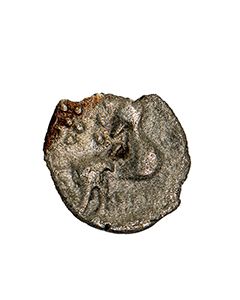 Celtic coin - Iceni tribe
Celtic coin - Iceni tribeEast Anglia mint, reported to have been found in Stonea Grange, Cambridgeshire.
Price: on request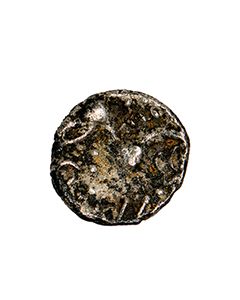 Celtic coin - Iceni tribe
Celtic coin - Iceni tribeEast Anglia mint, reported to have been found in Stonea Grange, Cambridgeshire.
Price: on request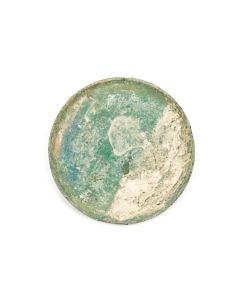 Roman mirror from Baalbek
Roman mirror from BaalbekThe bronze disc is the base plate of a bronze mirror, that was once attached to a handle and coated with a reflective metal layer. Typical for upper class Roman households during Imperial times.
Price: on request Roman mirror from Baalbek
Roman mirror from BaalbekThe bronze disc is the base plate of a bronze mirror, that was once attached to a handle and coated with a reflective metal layer. Typical for upper class Roman households during Imperial times.
Price: on request Base plate of a Roman mirror
Base plate of a Roman mirrorThe bronze disc is the base plate of a Roman mirror. A handle and reflective metal coating were once part of the mirror. Typical for upper class Roman households during Imperial times.
Price: on request Roman glass rod
Roman glass rodThe object had a function as a distaff, a tool for spinning. Particularly noteworthy is the beautiful spiral decoration and the complete preservation of the fragile material. From the Roman Imperial period.
Price: on request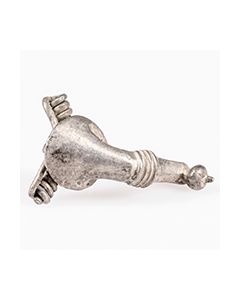 Pannonian trumpet brooch
Pannonian trumpet broochWell preserved Roman fibula made of silver. The type is from the Pannonian provinces of Rome and dates to the 2nd century.
Price: on request Group of 10 Roman sestertii from Wishanger hoard
Group of 10 Roman sestertii from Wishanger hoardFound 2021 in East Hampshire, UK. The hoard is a very impressive proof of the fact that coins were in circulation for up to several centuries in the Roman era.
Price: on request Trumpet brooch with Celtic decorations
Trumpet brooch with Celtic decorationsUnusual and rare variant of high importance, published several times. Beautiful silver inlays on the bow showing tendrils in Celtic style. From the 1st century.
Price: on request

